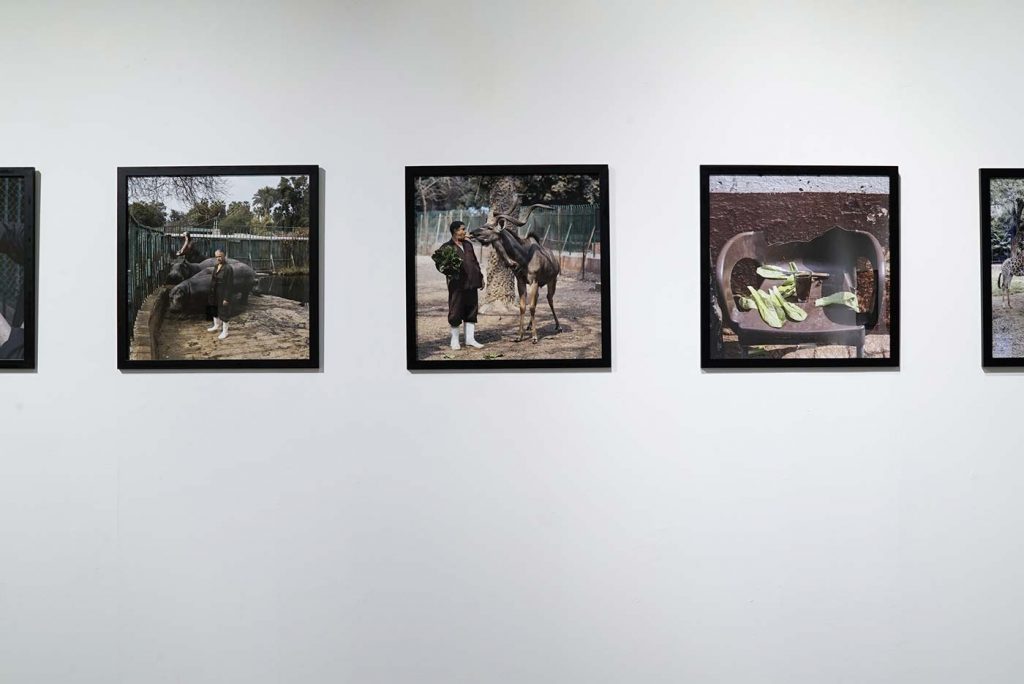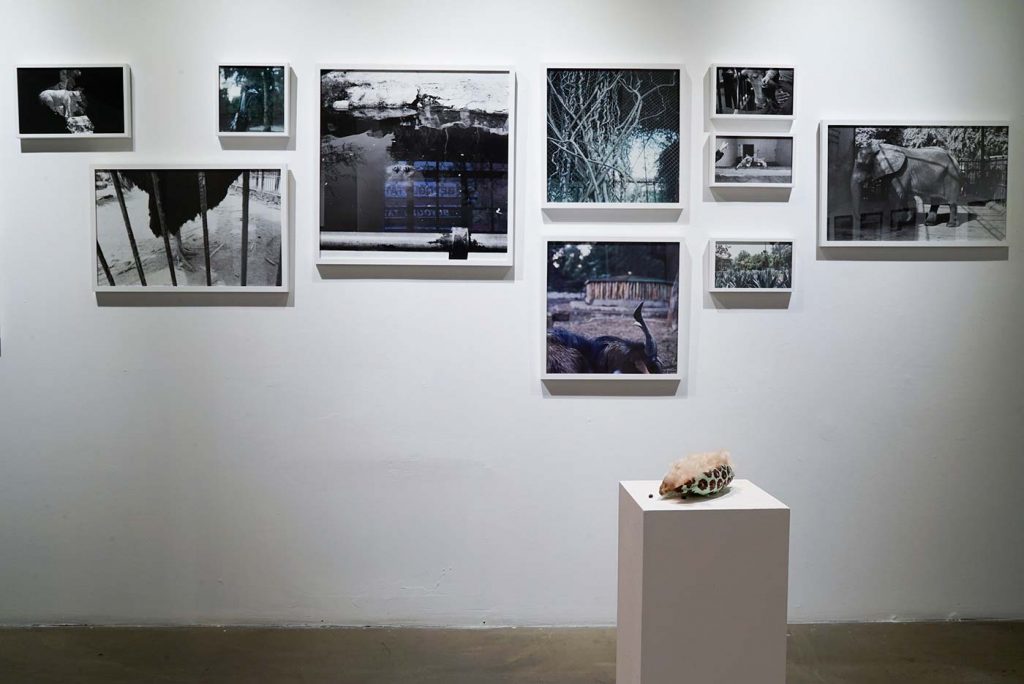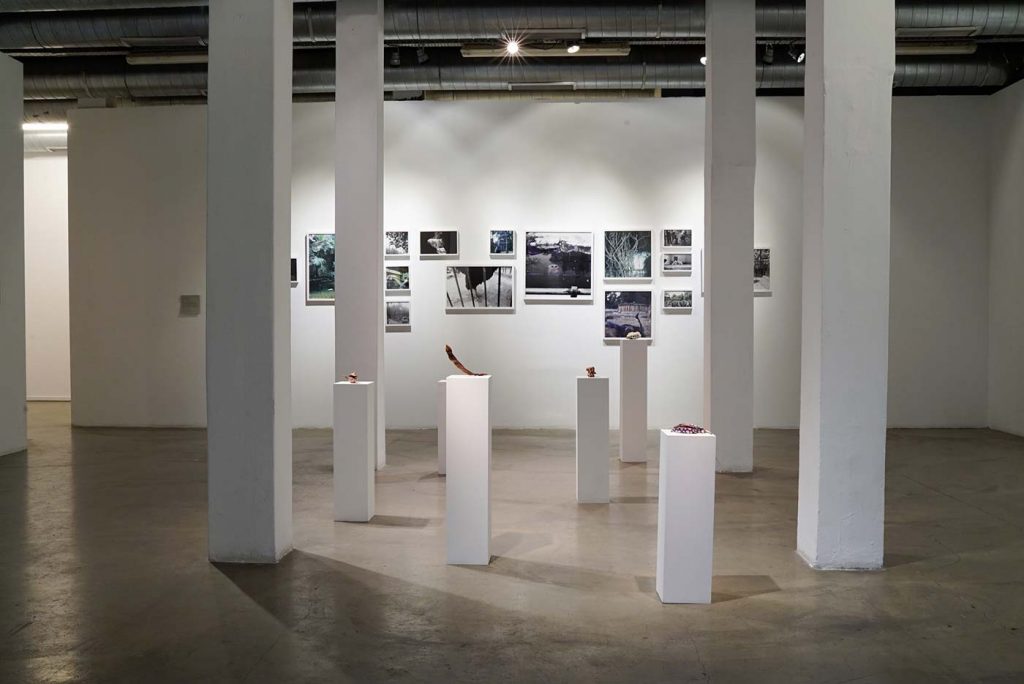by Alexandra de Cramer
Cities are mirrors of those who inhabit it, reflecting their shared way of life. Maturing entails facial lines to settle in, as a testament to one’s character. Istanbul rather, prefers an extended face lift. A dismissive act of the meaning and beauty of age. In our rapidly changing world, memory has become a lesser valued commodity. In Istanbul’s case, forgetfullness is the new mode of survival. My Dear Friends, is an exhibition that plays around with the valuation of monuments prized by time. It is a refreshing act of comradery for those who have been fighting to remember.
Egyptian photojournalist Roger Anis’ portrayal of the Giza Zoo is somewhat surprising to those who are familiar with its public image. In recent years, the Giza Zoo has made headlines as hell for animals. When one types Giza Zoo into Google’s search button, animal cruelty is the second line that appears as a suggestion. Speaking of animal cruelty in a country like Egypt is like 1,500 jets flying into Davos for the World Economic Forum to hear Sir David Attenborough speak about climate change. It is an outrageous double standard. Because not much has changed for the Egyptians since they flooded Tahrir Square. Hence why for many the Giza Zoo is more than a weekend outing.

Roger Anis, Relationships in Captivity series, 2018 as part of the exhibition My Dear Friends at Depo, Istanbul, 2019
In an admirably generous fashion, Anis opens up another window to look at the Giza Zoo, one from the inside out. In it, he captures a certain naivete that awakens hope. His camera angel blurs the lines between captivity encouraging the viewer to step out of his preconditioning and engage with the unspoken. Who here is really the captive, the animal or his keeper?
Anis’ series featured in the exhibition Relationships in Captivity begins with a group photo of the keepers that resemble boy scouts on a camping trip. They are all smiles, leaning on one another wearing matching uniforms. This is followed by frames of intimate interactions: an orangutan extends his hand to his caretaker, who gently clasps it to cut his nails; another strokes the rhino’s horn, while a keeper feeds a gazelle a carrot with his mouth. All of these are accompanied by texts outlining the personal history the animals and their keepers share. Some have been together for more than three decades, others have inherited this bond from their fathers. Considering the low wages, extended hours and the distances these keepers travel from, being employed by the zoo doesn’t have any incentives. It is the emotional interdependency exemplified in Anis’ images that the caretakers show up for and this friendship is the namesake of the exhibition, My Dear Friends.
These animals are the dear friends of Irish artist Bryony Dunne for a different reason. During her five year stay in Cairo, the Giza Zoo was a safe haven for Dunne. As a foreigner, and as a woman, it was where she could observe and document in peace. Unlike Anis’ photographs, naivete is not aired in the content of Dunne’s artwork but it pops up in her composition. It is the common language Dunne and Anis inhabit in My Dear Friends.

The seedpod of Vegetable Silk Tree, Chorisia Crispiflora, originating from Brazil and containing seeds, collected by Dunne in the Giza Zoo accompanied by Dunne’s photographs as part of the exhibition My Dear Friends at Depo, Istanbul, 2019
A black and white photograph captures an ostrich’s lower body and feet from behind bars. Another half image of a goat exposes its horns and shoulder. A closer frame is of an elephant’s trunk that has wandered beyond the wired fence reaching out to a toddler on his father’s arm. The angles, such as the downward slant in the ostrich photo, the fractioned style, and the familiarity of the moments, tell a story of the Giza Zoo from a child’s perspective. The orderly display of Anis is lost on Dunne. Instead, she opts for disproportioned sizes and a juxtapositioned layout. Her colorfully painted pod sculptures composed of seeds, which Dunne has gathered from the site over a two-year period, enhances the feeling of childlikeness. It is an untainted view of an outsider, who is simply mesmerized by the unknown, the unfamiliar and its beauty. Through Dunne’s take, the audience is reminded of the origins of the Giza Zoo, why it was built in the first place. Bring Them Back Alive, Dunne’s film on the opening of the Suez Canal in 1869 paving the way for the spread of colonialism by giving birth to places such as the Giza Zoo, scratches the surface of the cultural complexity the zoo represents.

Installation view of My Dear Friends at Depo, Istanbul, 2019
What was once the pinnacle of class, stature and wealth, is today a public space battling its poverty-stricken fate. It is dissolving into Cairo’s smog-like modernization, much like The Yacoubian Building. A sphere of beauty spoiled by the passing of time. It is in this under-represented tale of decay, where curator Deniz Kırkalı’s interest in the non-human and critical ecologies finds life. Undeniably the Anthropocene is one of the most pressing issues of our time, in this case, it wears the mask of a deteriorating cultural heritage site. My Dear Friends is a layered narrative of a neglected space. It is fitting to commemorate the image of the Giza Zoo in Istanbul that not discriminatingly has replaced all its memorabilia with so-called modern ones. Where to better highlight this yearn of nostalgia that Orhan Pamuk unapologetically trademarked for the city of Istanbul?

